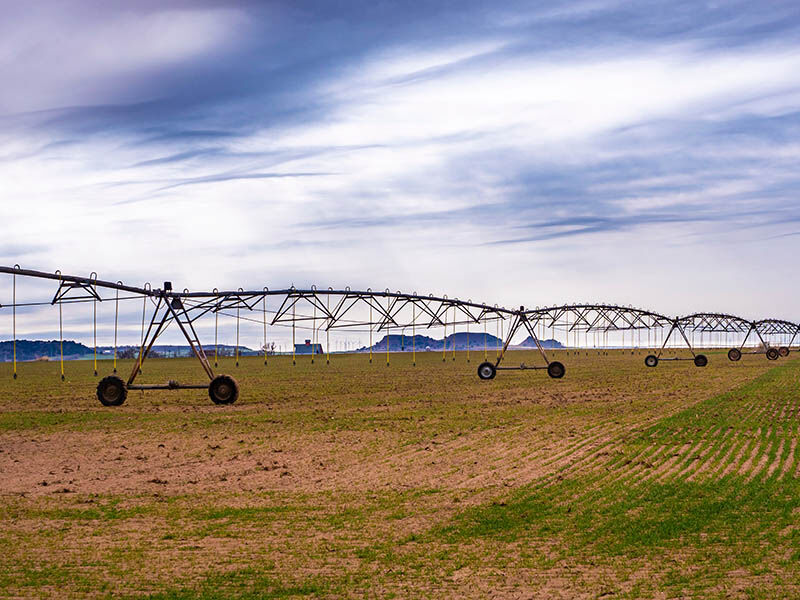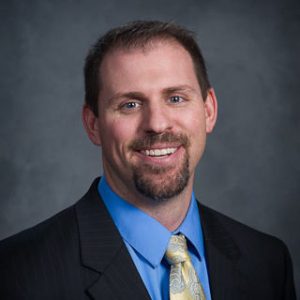Seek water-use help on the Ogallala’s decline

As the aquifer’s levels continue to drop, High Plains farmers and ranchers can get assistance with conservation solutions

On my family’s grain operation in southwest Kansas we’re taking more steps all the time to manage water use.
Our farm sits atop the Ogallala Aquifer, where groundwater levels are in serious decline. Water management has become critical not only for Kansas operations like ours, which rely on the Ogallala for irrigation, but for thousands of others facing similar challenges in the eight states overlying this vast aquifer. Making matters worse are recurring heatwaves and drought, increasing the need for irrigation and further depleting the aquifer.
The Ogallala’s rapid depletion is especially concerning because of its size and role. Also known as the High Plains Aquifer, it covers about 175,000 square miles under parts of Colorado, New Mexico, Nebraska, Kansas, Oklahoma, Texas, Wyoming, and South Dakota. Its groundwater supports nearly one-fifth of the United States wheat, corn, cotton, and cattle production, the U.S. Department of Agriculture reports. In fact, it’s the main water supply for the Plains’ population.
The Ogallala’s outlook is grim. For example, the Ogallala Aquifer in eastern New Mexico will cease to be a viable source of water for all users, with the possible exception of domestic use, within 10 to 15 years if all current uses continue at the same rate, according to USDA.
The bottom line is that conserving the Ogallala’s groundwater is critical to everyone in the High Plains. For farmers, lower groundwater levels drive up energy costs and well upkeep. Less water for irrigation could lead to fewer crop acres and decreased yields. Property values could take a hit.
Help is available
Fortunately, efforts are underway to help agricultural producers employ water conservation and land management practices that help use water more wisely. Those, in turn, reduce irrigation pumping demands on the Ogallala.
Government agencies, university researchers, irrigation and groundwater management districts, and other organizations are helping water users take action now. Many partner with USDA to offer technical and financial assistance. They’re helping farmers and ranchers change how they approach irrigation. They’re evaluating technologies to help ag producers manage water more sustainably. Some efforts are helping farmers convert irrigated cropland to dryland crops, pasture or native grasslands to reduce groundwater pumping.
I encourage farmers and ranchers throughout the High Plains not only to implement conservation solutions but to look for programs and funding that can help you do that. Every state has resources. Here are a few possibilities:
- USDA’s Natural Resources Conservation Service—NRCS has programs in all states whose farms are impacted by the Ogallala. NRCS offers voluntary incentive-based programs that can help you plan, design and implement conservation practices. Through its Environmental Quality Incentives Program, you can get financial assistance for structural and land management practices. These include low-pressure center-pivot sprinkler systems; variable frequency drives for irrigation pumping; sub-surface drip irrigation systems; conservation crop rotations; cover crops; nutrient management; pest management; and irrigation water management.
- Ogallala Aquifer Program—This is a cooperative project between USDA-Agricultural Research Service, Texas A&M University, Texas Tech University, West Texas A&M University and Kansas State University. The team focuses on innovative management technologies, appropriate for the region, to enhance and sustain rural economies.
- Colorado Master Irrigator Program—This offers farmers and farm managers advanced training on conservation- and efficiency-oriented irrigation management practices and tools.
- USDA-NRCS-2021-Summit-White-Paper—Although this report is two years old, it details Ogallala partnerships and program activities in each of the aquifer’s eight states.
If you need more help, reach out to me. I will be happy to direct you to someone who can help you find what you need. Keeping farmers and ranchers in business while, at the same time, carefully managing the Ogallala Aquifer is something we can all get behind.
Editor’s note: Maxson Irsik, a certified public accountant, advises owners of professionally managed agribusinesses and family-owned ranches on ways to achieve their goals. Whether an owner’s goal is to expand and grow the business, discover and leverage core competencies, or protect the current owners’ legacy through careful structuring and estate planning, Max applies his experience working on and running his own family’s farm to find innovative ways to make it a reality. Contact him at [email protected].
